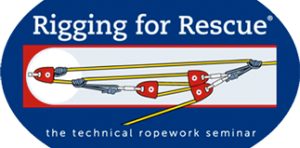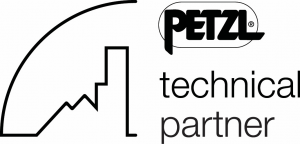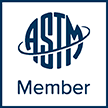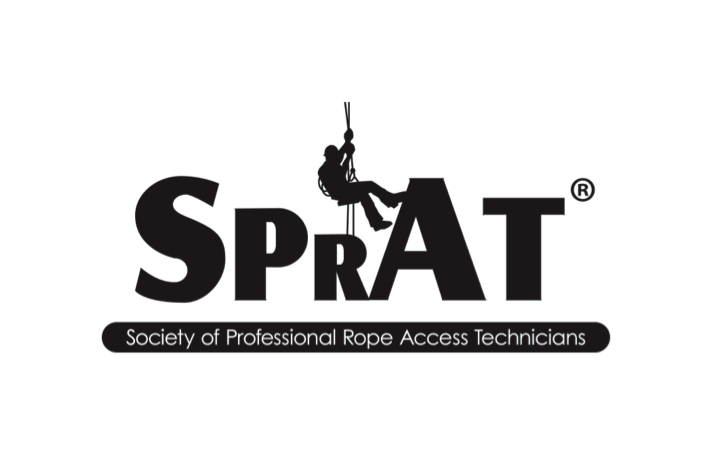Multi-Agency Fire Rescue Training
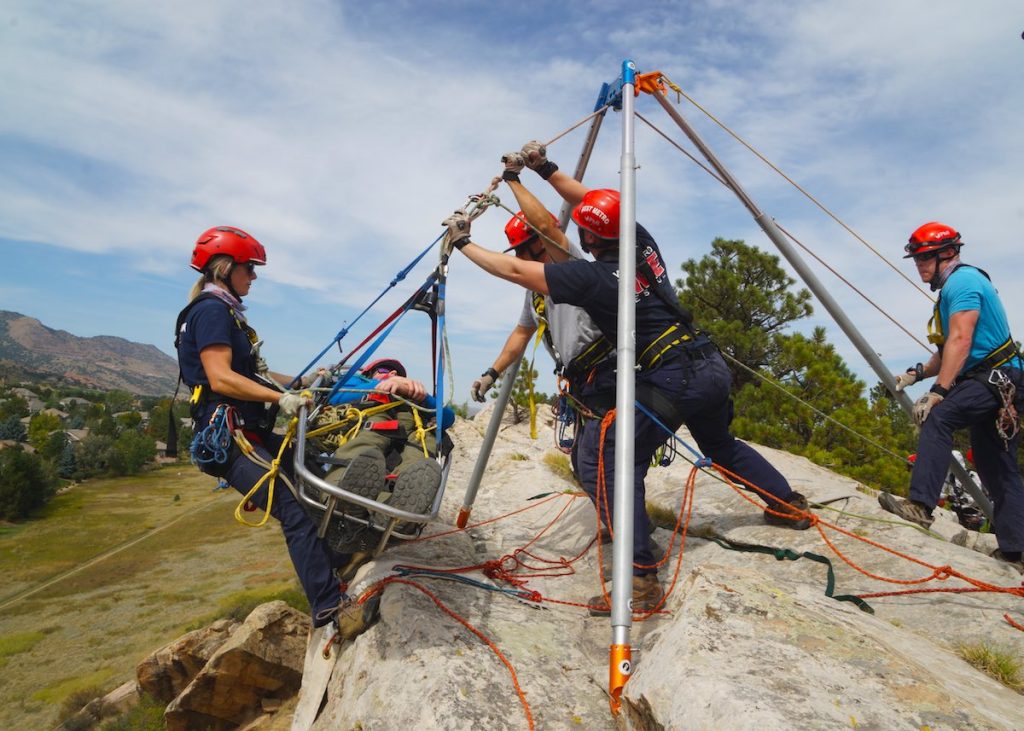
West Metro Fire Dept. based in Lakewood, Colorado responds to a number of rope-related callouts on an annual basis. Their area of response is where Denver recreates. As such, there are an inevitable number of incidents and accidents that occur in semi-backcountry settings around the western aspects of the greater Denver metro area. Rigging for Rescue has been working with West Metro Fire as well as numerous other Front Range fire departments for nearly 20 years now. In that time, we have had the opportunity to fine tune techniques and approaches in helping them solve their rope rescue challenges. One example is the use of 11mm rope versus traditional 12.5mm. Around ten years ago now, West Metro Fire largely led the effort within the state of Colorado to trend towards adoption of 11mm host rope for rope rescue response in the fire service. Our training event this past week included firefighters from four different Colorado agencies: West Metro Fire, South Metro Fire, Rocky Mountain Fire, and Vail Fire. We utilized a variety of techniques ranging from pickoffs to litter evolutions, as well as a Guiding Line aerial suspension system. Thank you to all of the participants and agencies for investing their time and resources into their ongoing rope rescue education and skills.
RfR Superstructure Update
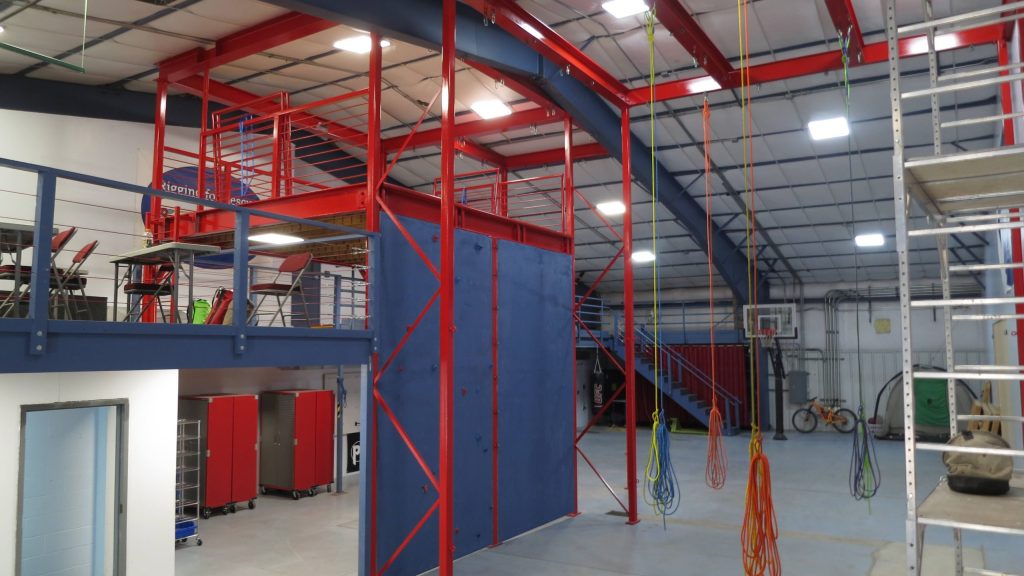
The RfR superstructure is pretty well finished. There are just a couple of minor remaining items to button up. However, the structure is functional and we have taken some laps on it at this point. Last week, the engineer came down to test all of the anchor points and various beams. The anchor points were all pulled to 2,000-2,500 lbs. The structural beams were pulled in two places up to 4,500lbs. All of the proof tests were satisfactory and we were issued our engineering stamp for the structure. We are currently hosting a Rope Rescue I: Fundamentals Seminar. The feedback from the RfR instructor as well as gathered participants has been very positive. It is easy to keep an eye on all of the facets of the training evolution. Plus there is enough space for all of the participants to be working on multiple skills at the same time. It makes for an excellent step-change transition from dry land practice to the outside field exercises. Our next step is to host an official SPRAT Certification rope access course. We are planning to have our first SPRAT offering sometime in early November of this year. This will allow for candidates to upgrade (or re-certify) before the November 16 SPRAT deadline associated with Covid-19 grandfathering. We anticipate SPRAT certification offerings on a regular basis in 2021. The Superstructure has been a literal and metaphorical work-in-progress for many years now. We are pretty stoked to see it finished! We think it will be a real game-changer for folks attending RfR events in Ouray. And we are very excited to step into the rope access SPRAT training world.
Grand Teton NPS- Alpine Mountain Rescue
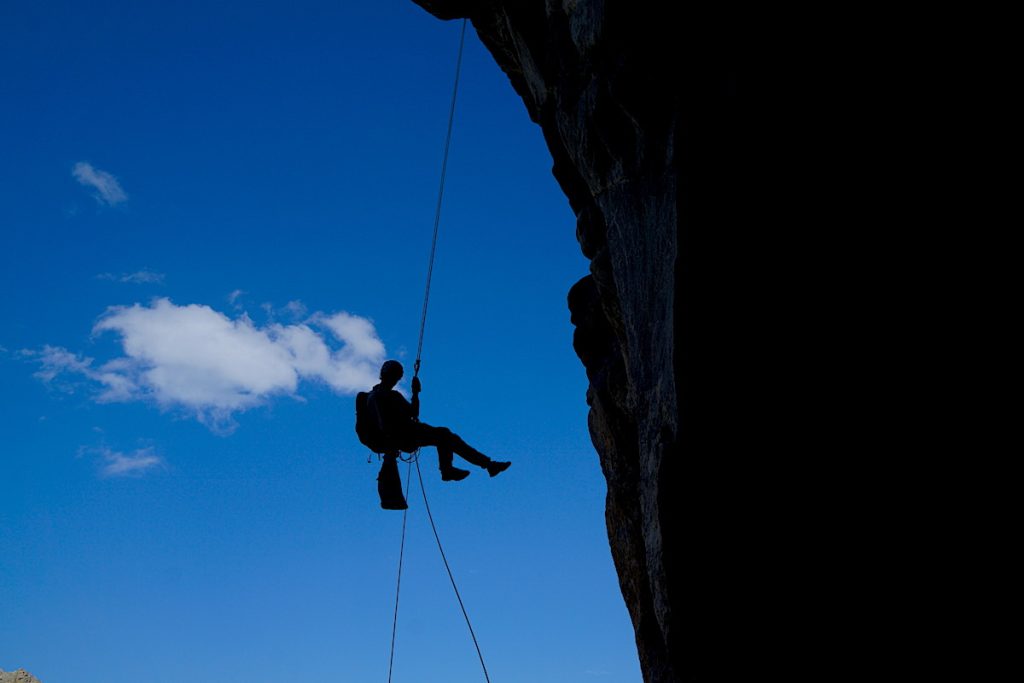
[fusion_text]What an outstanding week we just had with the Jenny Lake climbing rangers at Grand Teton National Park! We have had the great privilege of being the preferred rope rescue training organization for the Jenny Lakers for many years now. The climbing ranger cadre at Jenny Lake regularly conducts some of the most challenging mountain rescue operations in the country. Traditionally, our annual training has been conducted shortly after the seasonal rangers come on line in May. Weather is typically mixed that time of the year and access to the high country is limited due to winter snowpack and related logistics. For 2020, the decision was made to schedule the training for late August so that we could utilize the contract helicopter for high country access and take advantage of snow-free terrain on some bigger alpine aspects. Our overriding goal was to create scenarios that would simulate large-scale multi-pitch rope rescue objectives on commonly climbed features like the Grand Teton. We managed to thread the needle on suitable flying weather and successfully accessed terrain on a feature called Disappointment Peak (DP). The north face of DP has some existing climbing routes such as the classic Chouinard-Frost. We chose a line through unchartered ground that had no existing climbing routes and involved navigating some big roofs and ledge systems. The scenarios were highly realistic and encompassed all of the challenges of technical rope rescue in big alpine terrain. Multi-pitch lowers, maintaining umbilical connections to upper stations, sending scouts down to survey the terrain prior to lowering the patient package, rock pro anchors, command and control, etc. It was a phenomenal week with some of the most capable rescue practitioners in the country. Thank you Jenny Lake! [/fusion_text][youtube id=”https://youtu.be/i9xhTuUEFr0″ width=”600″ height=”350″ autoplay=”no” api_params=”” class=””][/youtube]
RfR in the Summer of Covid-19
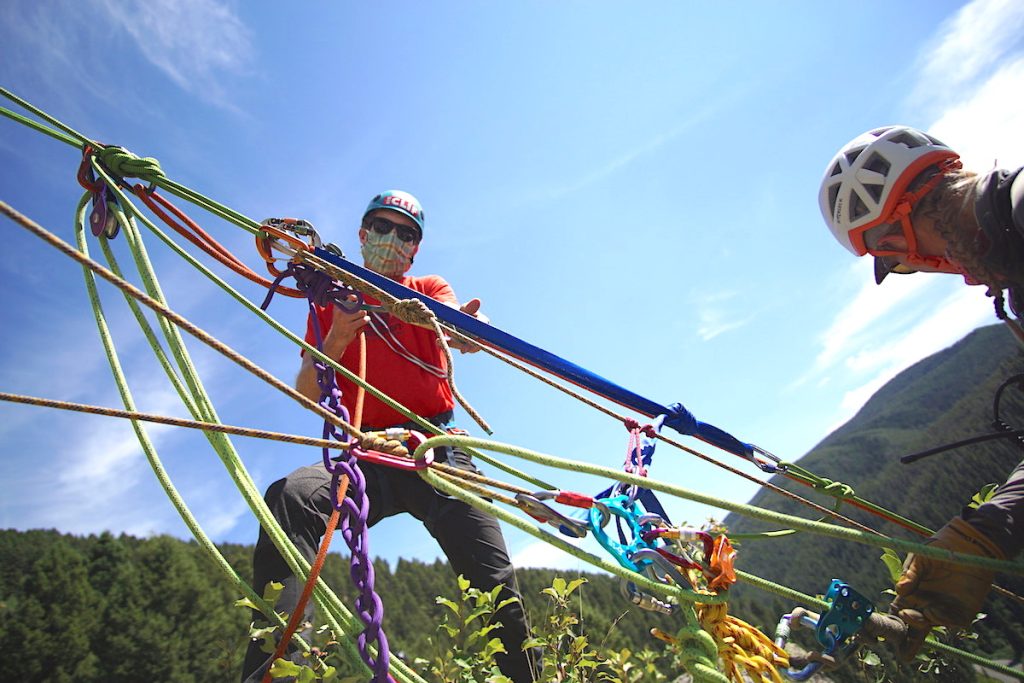
This summer we have been able to deliver our educational training services to a number of agencies, despite the challenging conditions of operating in the age of Covid-19. Most agencies have numerous protocols and/or guidelines in place for allowing their personnel and our instructors to conduct rope rescue training events. We have been utilizing recommended CDC guidelines such as masks on in close proximity of each other and/or working inside, plenty of ventilation and spacing of seating arrangements while inside, temperature checks, readily available personal hygiene tools such as hand sanitizer, and the like. Our recent week with Gallatin County SAR in Bozeman, Montana delivered bluebird weather, great site locations in Hyalite Canyon, and a thorough review of litter attending, pickoffs, as well as a big Guiding Line aerial suspension system. Like numerous other mountain rescue teams that we regularly train, Gallatin SAR has moved towards ATC-based (i.e. slot style climbing DCDs such as Petzl Reverso, Black Diamond ATC, etc.) systems as opposed to traditional brakeracks or Scarabs. These ATC systems are employed in combination with a VT Prusik Max/1 friction hitch in addition to a carabiner re-direct for additional friction. The Main and Belay are rigged identically and they are operated according to the conditions present (i.e. 1-person or 2-person load? Technical edge transition Y/N?). Post edge transition, the systems are run in dual tension for the balance of the lowering and/or raising operation. Mountain rescue teams are frequently populated with personnel coming from a climbing background. The skills required for an ATC-based system are often already present. Everything from rigging to inspections, to operations is streamlined and arguably safer for all involved.
RfR in the High Sierra
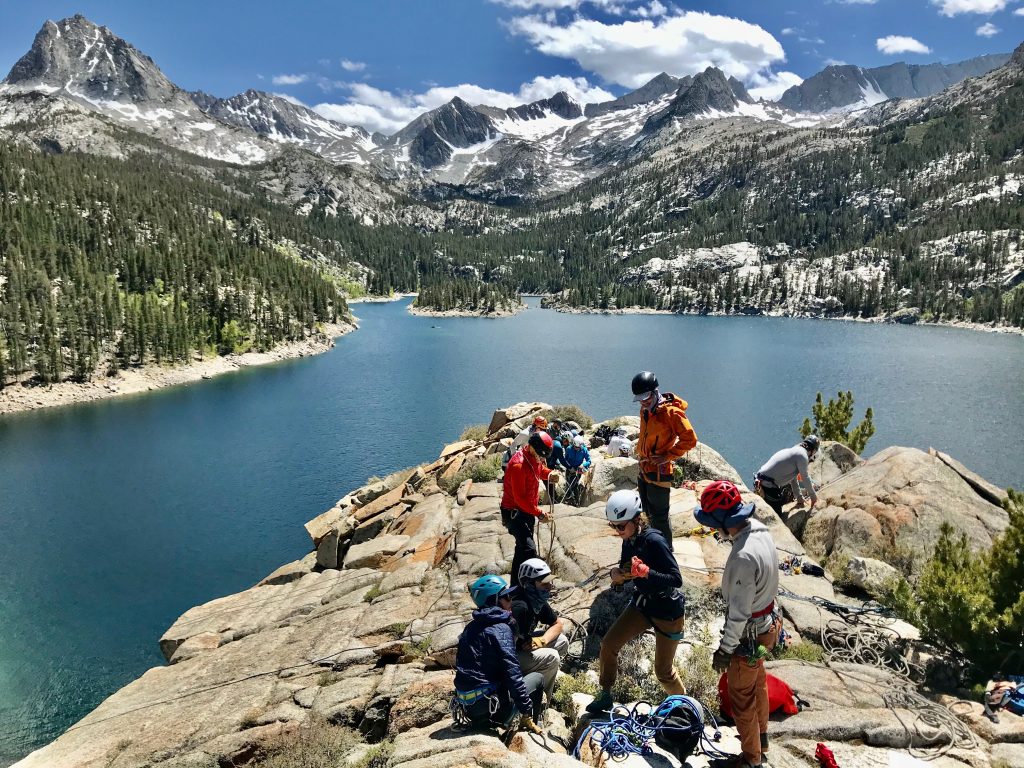
This past week we were treated to an outstanding RfR seminar experience in the High Sierra of California – a super dedicated group of volunteer SAR members who were keenly interested in expanding their skills, flawless weather, and incredible mountain scenery as a backdrop to the granite crags. The Inyo County SAR team has a sizeable annual call volume in the Eastern Sierra above Bishop. After attending one of our Small Teams workshops in Ouray a couple of years ago they made the move to 9.5mm rope in combination with lightweight ATC-style devices backed up by VT Prusiks. For SAR teams performing remote mountain rescue, the skinnier host rope and lighter hardware systems are a match fit for their Mission Profile.
Superstructure Update June 16
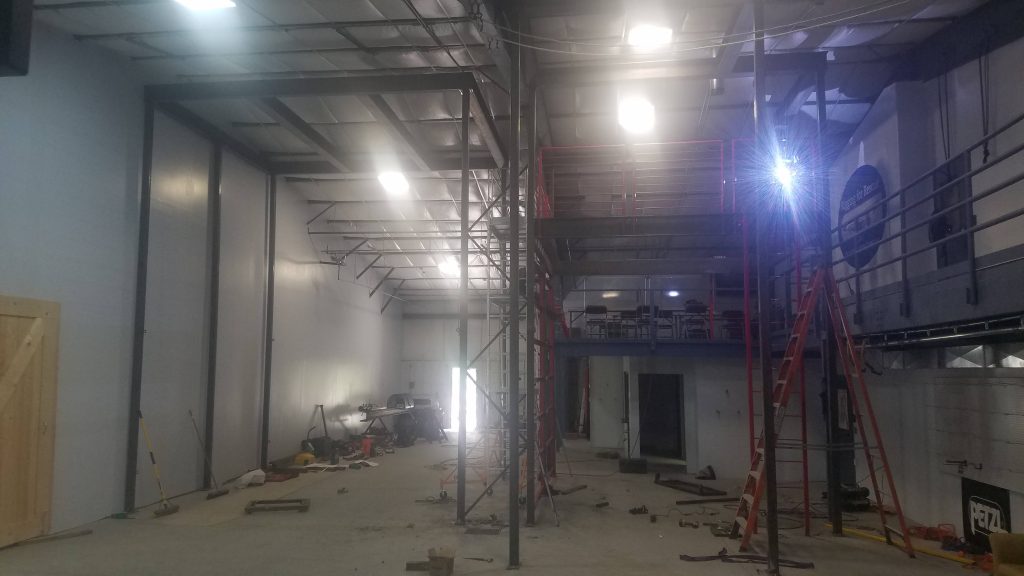
[fusion_text]The Skol Studios crew are almost finished with the install. We now have some “RfR red” pieces going in. We will be painting the rest of the structure red later this week.
Superstructure Update June 11
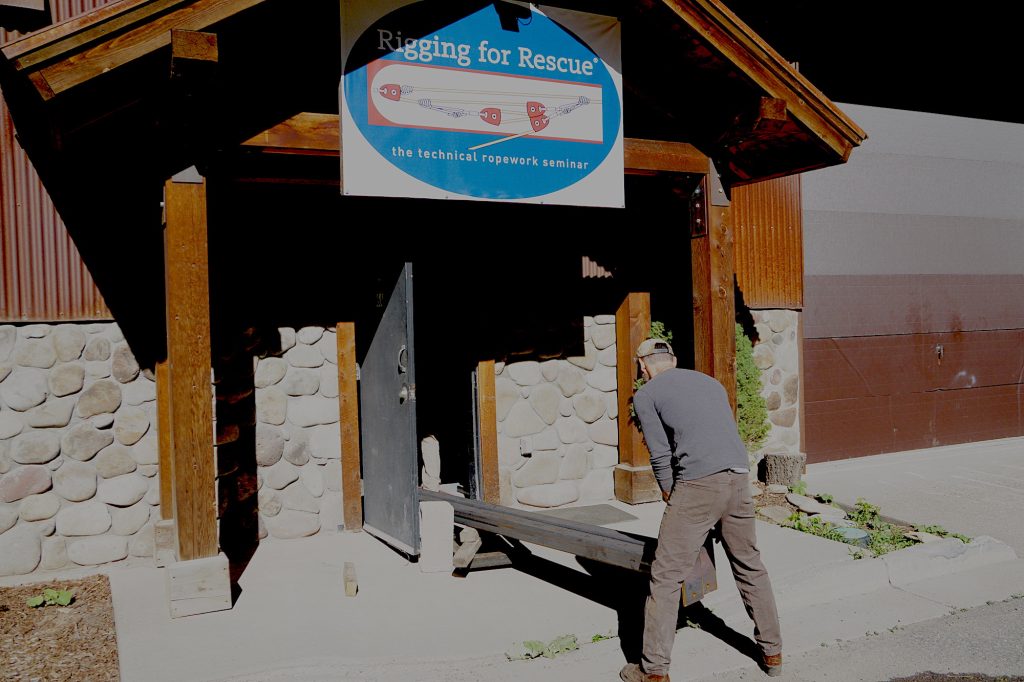
[fusion_text]The Skol Studios crew has been working hard to get the training tower up and ready. They are particularly skilled in moving their big machine around some relatively tight quarters. Those beams are big, heavy, and hard to move. Here is a quick video update of the progress. [/fusion_text][youtube id=”M9dW6HMytrU” width=”600″ height=”350″ autoplay=”no” api_params=”” class=””][/youtube]
Training Center Superstructure
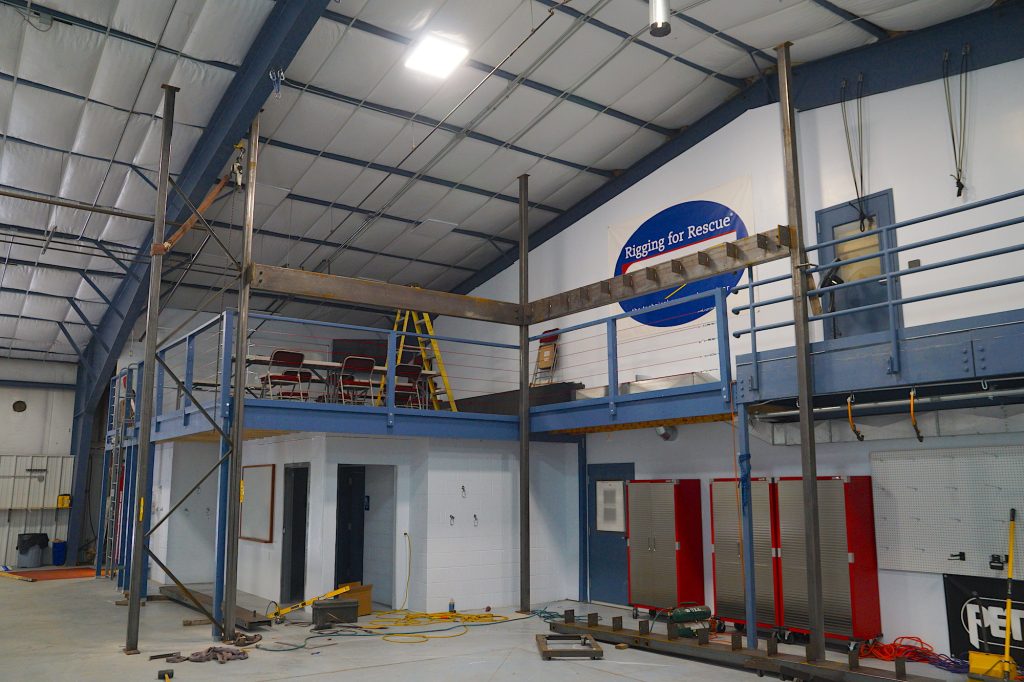
At long last we are installing the RfR “Superstructure” this week. Local architectural metalworker Jeff Skoloda and his team at Skol Studios in Ouray were hired to fabricate and install a new training structure for RfR. We will have a large platform for over-the-edge scenarios, an inside drop tower for systems testing, and a full rope access platform. The structure should be finished within a week and then our intent is to offer some SPRAT courses here in Ouray. Additionally, any open enrollment offering in Ouray is going to benefit greatly from user-friendly on-rope scenarios in inclement weather as well as the ability to participate in “quick look” drop testing examinations. One of the best educational methods in ropework is to be able to practice a concept with true suspended weight as opposed to mocking up a scenario on flat ground off a tree, for example. The new Superstructure will allow for the entire array of practice scenarios such as knot passes, pickoffs, and litter lowers/raises – all connected to our current classroom facility. We are super stoked!
Waterfall Ice Workshop – West Coast PJs
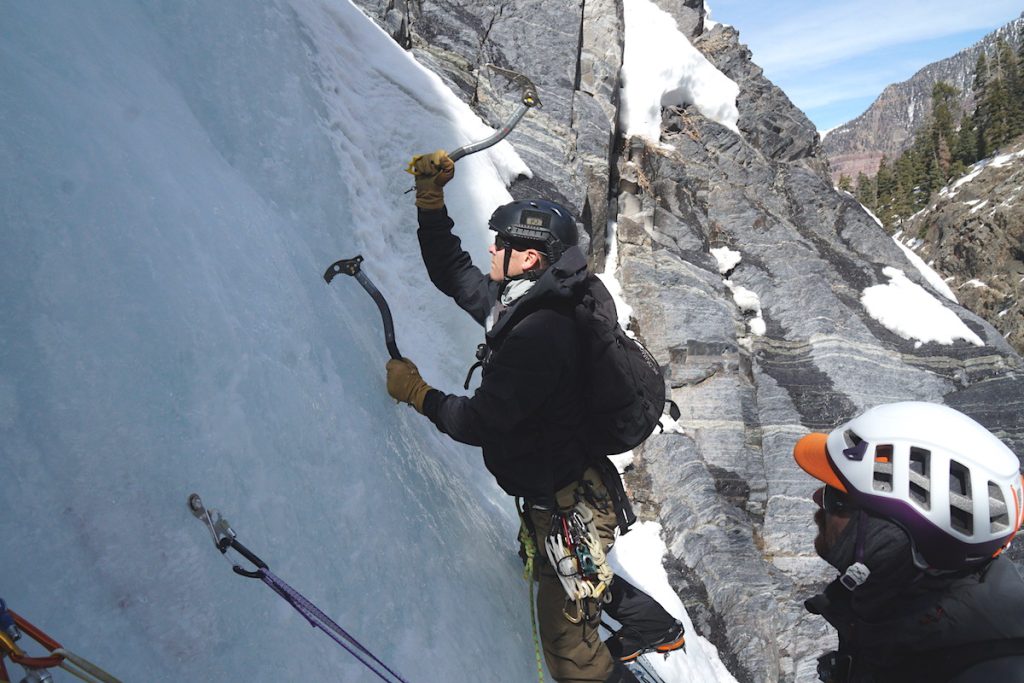
The 131st RQS Pararescue Team visited us in Ouray this past week for a waterfall ice rescue workshop. Ice climbing conditions in Ouray this winter have been as good as we have seen for many years. The focus of the week was on a small team rescue approach coupled with considerable respect for the dynamic nature of the ice climbing medium. The workshop progression worked through movement skills, companion rescue scenarios, and wrapped up with an ascent/descent of a mock patient on a backcountry ice climb. A number of the PJs had limited experience on waterfall ice prior to the training seminar. However, by the middle of the week everyone was moving well on the medium and executing the ropework scenarios in a secure and timely fashion.
Khumbu Climbing Center Annual Training
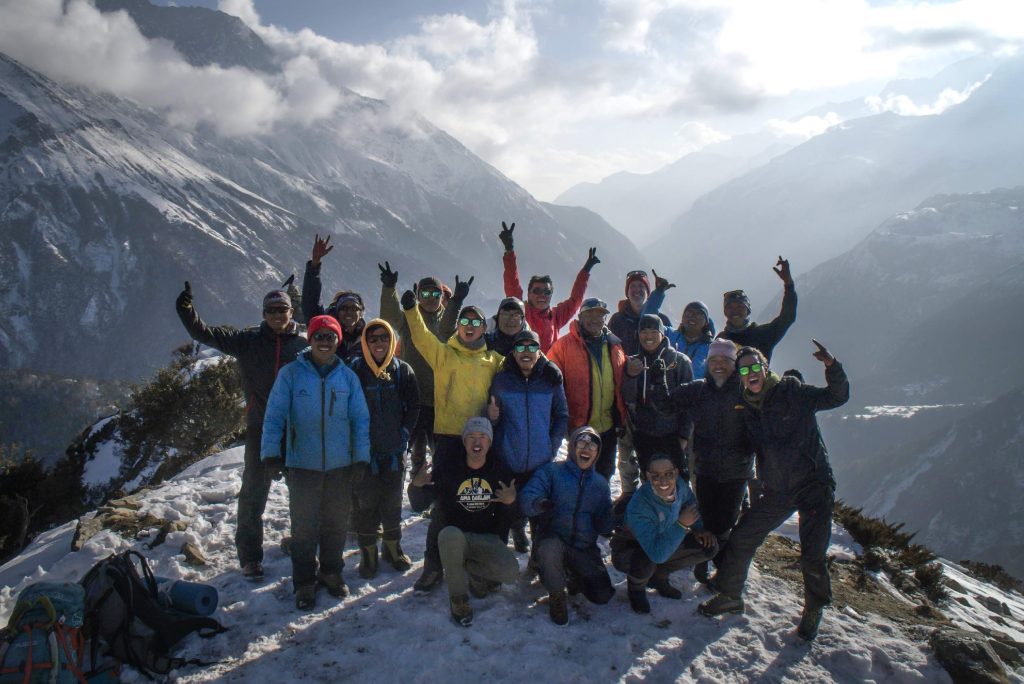
For the past two weeks, Rigging for Rescue’s Xander Bianchi has been instructing climbing and rescue techniques at the Khumbu Climbing Center (KCC) in Phortse, Nepal in the Khumbu region near Mt. Everest. Each year, Rigging for Rescue sponsors an instructor in traveling to Nepal to volunteer their expertise to the Sherpa guides and high altitude porters that operate on Everest during the spring climbing season. The Sherpa KCC attendees are often responsible for rescues that occur on Everest. The KCC training center in Phortse is the focal point for Sherpa continuing education programs revolving around climbing and rescue techniques. KCC was started through the Alex Lowe Charitable Foundation founded by Alex’s widow Jennifer Lowe and his best friend Conrad Anker. Together with many other Westerners working in conjunction with Nepalese Sherpa principals, KCC has developed an annual training program that better prepares the up and coming Sherpa guides and porters for the demands of rescue on Mt Everest. At Rigging for Rescue, we feel very privileged to have been able to offer rescue and climbing training to the Sherpa community for the past several years. A typical day of training at KCC involves a brief whiteboard discussion followed by a pretty robust hike to the local crags. Some of the terrain utilized is on sunny south facing rock crags and much of the terrain is on moderate waterfall ice climbs located in the valley ascending towards Gokyo. Climber pickoffs, companion rescue skills, litter lowers & raises, anchoring techniques, and rescue principles are all covered during the seminar. The Sherpa climbing community at Phortse and KCC are generous and gracious hosts. The annual KCC rescue training seminar is one of our favorite events of the year and we are already looking forward to 2021.
